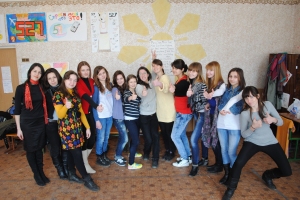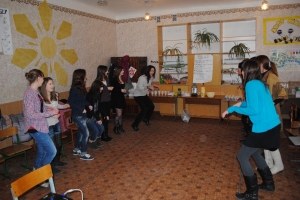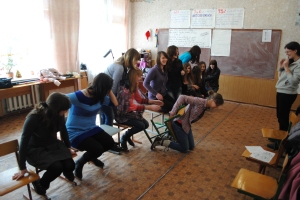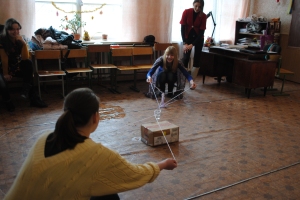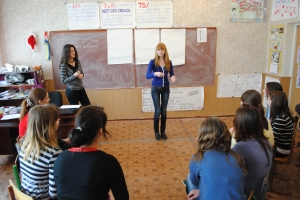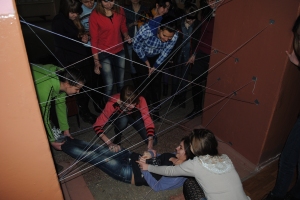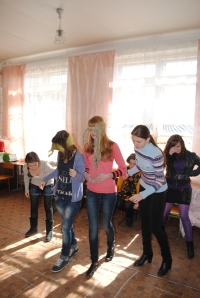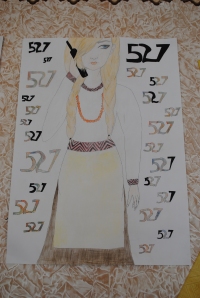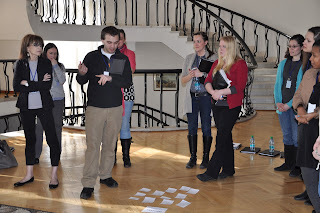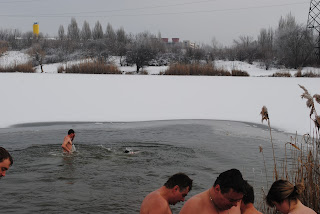Recently I just conducted a 3-day camp for girls of the 9th and 10th grade. The theme was Women's Empowerment. We had 13 girls show up, 3 PCVs and 4 Ukrainian helpers.
Day 1: Self-Esteem/postive body image
Day 2: Healthy Relationships/communication
Day 3: Female leaders/empowerment
Here Luda points out the differences between two pictures, one with photoshop and one without. This lesson was to demonstrate that photoshop can easily "take away imperfections" and make models look perfect, but in reality, they are just beautiful women that probably never needed "touching up".
Here, Jenny has a discussion with the students about female leaders/role models. Megan Fox claims to be a role model, but an atypical one. She may drink alcohol, smoke and use bad words, but she will teach your daughter to be independent, speak out against wrongdoings, and stand up for what she believes in.
Camp Song time! "Let me see your funky chicken!"
My Ukrainian friend Valentina gave an interesting presentation about finding love. She teaches to students that they need "to find themselves" before "finding the one".
Alona and Mary did a super hilarious advertisement about a drink. (beer maybe?) Alona is the ocean in this picture and Mary is the costumer who will soon be enjoying a nice drink on the beach. This activity included several different magazine advertisements, some of them actually showing what they were advertising (this one!) and others simply using female or male bodies to sell their product. Interestingly enough, the students misunderstood an Abercrombie & Fitch advertisement for being a fitness center advertisement. hehe.
Speaking against advertisements that make women feel competitive and needing to put on tons of make up and use photoshop to feel beautiful!
Giving compliments to each other to boost our self-esteem!
Here, students are demonstrating a skit in which a neighbor woman can hear child abuse in the apartment next door. Students are required to think of what the neighbor woman can do to help or stop the situation.
In this situation, a young neighbor child tells you that there is no food in her house. What can you do? These girls smartly thought that we need to first find out the whole situation. Are they bad parents or just poor?
How to handle a situation when your friend tells you that she is pregnant.
What should you do when your boyfriend is pressuring you to have sex?
Crossing the River Activity: Papers are used as stones to "cross a river". Once you go across, you can't go back. Three people are also blindfolded!
Organization game: Without touching the ground, one must get in order of youngest to oldest.
In this game, the students must move a cup full of water out of the circle without entering the circle or moving the box the cup is on. The only materials they have is string, paperclips, and tape.
Having a discussion about powerful women. :-)
Conor talks about Gender Stereotypes and equality.
The Matrix!!!
Blindfold Maze Walk!
Relay Race!
Over the rope: Ukrainian Style: (A Napkin in place of actually stepping on Alina's pants)
527 Poster Contest!
527 is a free hotline for Ukrainians that they can call if they want to work, live, or study abroad. All they need to do is give the number the info for where they will go and the 527 volunteers will find out if it is safe or not. This number is to help prevent the trafficking of Ukrainians.
The winning poster!!! (3D!!!!)
:-) Comments are appreciated!
